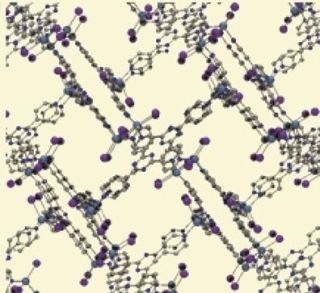X-ray crystallographic analysis is one of the only methods that provides direct information on molecular structures at the atomic level. The method, however, has the intrinsic limitation that the target molecules must be crystalline, and high-quality single crystals must be prepared before measurement.
 Binding modes found in the pore of a crystalline sponge are shown (Credit: Hoshino et al)
Binding modes found in the pore of a crystalline sponge are shown (Credit: Hoshino et al)
These limitations have often caused considerable problems for scientists in their determination of molecular structures. In 2013, a group of scientists reported a revolutionary new technique for single-crystal X-ray diffraction analysis that did not require the crystallisation of samples in the sample preparation [Inokuma et al. (2013), Nature, 495, 461-466]. This method, later coined the crystalline sponge method, uses crystals of porous metal complexes capable of absorbing guest compounds from solution in a common solvent. The guests are efficiently trapped and concentrated at several binding sites in the porous complexes, and the periodic array of the binding sites renders the absorbed guests oriented and observable by common X-ray diffraction studies.
However, the subsequent data quality of the trapped guest compound was not very high and the use of restraints and constraints based on chemical information was necessary to refine the guest structures. The need for this workaround was due purely to unoptimised experimental conditions and protocols. It soon became clear that to develop the crystalline sponge method from basic science into a reliable new technology that might innovate and support the molecular chemistry community, considerable effort was needed to improve the data quality. In addition, the crystallographic scope and limitations in the refinement of structures with large pores — more commonly known as metal–organic framework (MOF) structures — needed to be considered carefully. Over the last two years, therefore, the same group of researchers has made considerable advances in improving the data quality and uncovering the crystallographic scope and limitations for the refinement of guest structures obtained using the crystalline sponge method [Hoshino et al. (2016), IUCrJ, 3, 139-151; doi:10.1107/S2052252515024379].
These researchers anticipate renewed interest in the technique and hope further experimentation by the community will improve the quality and value of the protocol.